Laparoscopic surgery
It’s been a long time since the first laparoscopic procedure.
In 1900 German surgeon Georg Kelling performed the first such procedure on dogs.
In the last 40 years, however, from a limited diagnostic technique, laparoscopy is a major surgical option for approaching many gynecological disorders.
The rapid development of technology also brings the rapid improvement of laparoscopic techniques.
Today, besides better tools and cameras, robotic assisted laparoscopy (Robotic Surgery) and single-port laparoscopy are also being developed.
The advantages and disadvantages of these new approaches compared to traditional laparoscopy, and their indications, remain to be determined in many cases.
What do we call laparoscopy?
Is sometimes called ‘key-hole surgery” or ”minimally-invasive surgery” and is an alternative to open surgery, surgical method.
With the laparoscope, which is a thin, with a light source telescope, we can look at the abdominal organs. From a small hole in the belly button will pass the laparoscope, and 2 or 3 microscopic incisions will allow the entrance of the appropriate tools.
Surgery is performed outside the patient’s body with the laparoscopic surgical instruments. By manipulating them the movements are transferred inside the abdomen.
What are the indications of laparoscopy
Recommended:
- To help clarify an unclear diagnosis.
- To treat a gynecological condition
The rapid development of technology also brings the rapid improvement of laparoscopic techniques. Today, besides better tools and cameras, robotic assisted laparoscopy (Robotic Surgery) and single-port laparoscopy are also being developed.
The reasons for diagnostic laparoscopy are:
- Unexplained infertility in women
- unexplained severe pelvic or abdominal pain
- Possible endometriosis
- Possible extrauterine (ectopic) pregnancy
- Pelvic adhesions mainly of the fallopian tubes and ovaries
- Hydrosalpingx or closed ends of the fallopian tubes
- Possible pelvic abscess
- Ovarian diseases (cysts, ovarian cyst twisting)
- Take liquid for biopsy
- Ovarian tumors
- Uterine fibroids
Often we will choose laparoscopy for:
- Removal of ovarian cysts
- Removal of fibroids
- Treating endometriosis
- Treating the adhesions of the peritoneal cavity
- Treating ectopic pregnancy
- Correction of urinary incontinence
- Correction of uterine prolapse
- Female sterilization (having your fallopian tubes ‘tied’ or clipped as a permanent form of contraception)
- Salpingoplasty
- Removing the ovaries
- hysterectomy (removal of the uterus)
What will you feel after laparoscopy
- Perhaps pain of moderate or low intensity. It will easily be treated with painkillers.
- The gas used in the surgery, carbon dioxide, due to the pressure it exerts on the diaphragm can cause shoulder pain. It’s not disturbing and it’s leaving quickly.
- Pressure from the gas can cause frequent urination , which also disappears at the end of the same day or the next.
Are there any risks?
- Complications are rare in organised gynecological hospitals.
- Inflammations or bleeding are possible but uncommon.
- To minimise the complications associated with anaesthesia, good pre-operative control of the patient is required.

Contact us for a consultation
Τηλ.: 210 6428674 – 210 6451818
 English
English Ελληνικα
Ελληνικα



